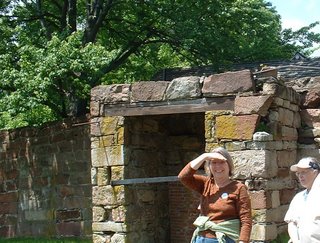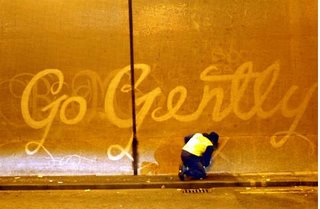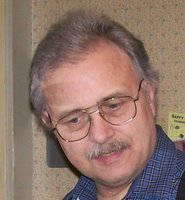NEWGATE is the name of a famous prison in London. It is called "Newgate" because it was first built, centuries ago, over a new gate in the wall of the city. Later, when these rooms over the gate became too crowded, a larger prison was built near by and called by the same name.
There was once a Newgate prison in Connecticut. It was named for the old English one, but, instead of being up over a gate, it was down underground in a copper-mine. There was no entrance to it except by a shaft thirty feet deep, and the colonists chose this place for its security, yet the history of Newgate in Connecticut is full of tales of the daring and successful escapes of its prisoners.
Copper Hill, where the prison was, is in what used to be the town of Simsbury, but is now East Granby. The copper-mines there were opened early in 1700, and were worked for about sixty years. The copper is said to have been of good quality. In 1737-39, coins were made from it - some say by Dr. Samuel Higley who owned a mine near his home. These coins were never a legal tender, but were used as "token money," because small change was scarce in the colonies. They are valuable to-day because they are very rare. Granby coppers have on one side a deer standing, and below him a hand, a star, and III, and around him the legend, "Value me as you please." On the other side are three sledgehammers with the royal crown on each hammer, and around them either the word "Connecticut," or the legend, "I am a good copper," with the date 1737. A third kind has one broadaxe and the legend, "I cut my way through." There is a specimen of each of the three kinds of Granby coppers in the Connecticut State Library at Hartford
The mines were quite successful at first, but, as the colonists were not allowed to smelt and refine the ore in America, they were obliged to send it all the way to England, and this was very expensive. Sometimes, too, the ships carrying copper did not reach England at all. One was wrecked in the English Channel and another was seized by the French during a war with England. So in 1773, a few years before our Revolutionary War, the mines were given up and the largest of them was changed into a prison.
At first there were no buildings at all. There was nothing but a hole in the ground, closed by an iron trapdoor that opened into the shaft, where a wooden ladder was fixed to the rock at one side. At the bottom of the ladder there was a flight of rough stone steps leading farther down into the mine. All was dark and still except for the dripping of water along the galleries that led away into the heart of the hill. One cavern was blasted out to make more room and was fitted with wooden cells and bunks for the prisoners to sleep in, and at night a guard was set to watch the entrance up above and prevent any one from climbing the ladder and getting out. When everything was ready, the committee in charge of the work reported that it would be "next to impossible for any one to escape from this prison."
The first prisoner sent there was a man named John Henson, who was committed on December 22, 1773. He spent eighteen days alone in the mine; then, on the night of January 9, 1774, he disappeared. No one could imagine how he got out. But there was another shaft leading up from the mine, a very deep one, where the copper ore had been drawn out. It had no ladder in it and its opening had not been closed, because it did not seem possible for a prisoner to escape that way. Yet a woman drew John Henson up eighty feet through the shaft in a bucket used for hoisting copper. After that, this shaft, too, was carefully closed and a strong wooden guardhouse was built over the entrance to the other one.
More prisoners were soon committed to Newgate.
"Burglars, horse-thieves, and counterfeiters," according to the law, were sent there and they were set to work mining copper, but instead of doing this, they dug their way out with the mining tools; so workshops were built aboveground where they made nails, boots and shoes, wagons, and other things. They slept in the mine as before, but at daylight they were called and came up the ladder in squads of three at a time under a guard, climbing as well as they could with fetters on their legs. They took their meals in the workshops and were chained to the forges and workbenches until late in the afternoon, when they went down again into the mine for the night.
When the Revolutionary War began, in 1775, political prisoners were sent to Newgate in Connecticut, just as such prisoners had often been sent to old Newgate in England. These men in America were the Tories, or Loyalists, who sympathized with the British and were often found giving them information and help. To protect themselves the Americans arrested them. Some of the first were sent by Washington from the camp at Cambridge where the American army was besieging Boston.
Here is a part of his letter to the Committee of Safety at Simsbury; its date shows that it was written several months before the Declaration of Independence by the Continental Congress in Philadelphia:-
CAMBRIDGE, December 7th, 1775.
GENTLEMEN:
The prisoners which will be delivered to you with this, having been tried by a court martial, were sentenced to Simsbury in Connecticut. You will therefore have them secured so that they cannot possibly make their escape.
I am, etc.
GEORGE WASHINGTON.
But the Tories were just as anxious as any other prisoners to escape if they could. Three times the wooden guardhouse over the entrance was set on fire and burned down. Once, when there were a great many Tories in Newgate, they made a concerted plan and carried it out successfully. The wife of one of them had permission to visit him, and came to the prison one night about ten o'clock. Only two guards were on duty then at the mouth of the shaft. When the trapdoor was lifted for her, the prisoners were all ready and waiting on the ladder. They rushed out, overpowered the two men, took away their muskets, and got possession of the guardroom. The rest of the watch, who had been asleep, hurried in, and there was a desperate fight; one man was killed and several were wounded. At last the prisoners succeeded in putting all the guards down into the mine and closing the trapdoor upon them. Then they escaped themselves, and few of them were ever retaken.
A story is told of a Tory prisoner who, about the year 1780, made his escape in a remarkable and unexpected way. There was an old drain in the mine which had once carried off water, but when the mine became a prison it was stopped up with stone and mortar, except for a small opening where the water still ran off between iron bars. The outlet of this drain was far down on the hillside beyond the sight of the guards. The prisoner, Henry Wooster, who worked in the nail-shop, contrived to hide some bits of iron nail rods in his clothes and carry them back with him into the mine. He learned, with their help, to take off his fetters at night. Then, with the same bits of iron, he worked at the bars of the drain until, little by little, he loosened some of thorn and took them out so that he could crawl through into the drain. But the drain was too narrow in some places to let him pass, and he was obliged to loosen and remove some of its stones. This was a long and hard task, but he was not easily discouraged. Each night ho took off his clothes and his fetters, crawled into the drain, and worked until morning. Then he replaced the iron bars, dressed, put on his fetters, and was ready when the guards came down to go up to the shops with the rest of the prisoners. By and by he got neary to the end of the drain. Then one night, while he was down there, a stone, which he had accidentally loosened, fell behind him and blocked his way back. He could not turn to reach the stone with his hands, for the drain was too narrow, he could not stir it with his feet, and he dared not cry out for help; time passed, and it was almost morning; he would be called and missed, and he shuddered to think of the consequences. At last, as he was about to give up in despair, he felt the stone move just a little. Bracing himself against the sides of the drain, he pushed it vigorously with his feet. Slowly, inch by inch, it rolled back until it fell into a slight depression so that he could pass over it. Bleeding and exhausted, he got to his bunk and into his clothes and fetters again just as the guards came down the ladder. A few nights later he finished his work and, with several other prisoners, escaped through the drain.
Some of the Tories in Newgate were well-known and educated men. One was a clergyman named Simeon Baxter. He preached a sermon, one Sunday, to his companions in the mine, in which he advised them, if they could, to assassinate Washington and the whole Continental Congress. This sermon was printed afterward in London and proves how bitter the feeling was in those days between the Americans and the Tories.
After the Revolution, Newgate was the state prison of the State of Connecticut until 1827. New workshops and other buildings were added from time to time as they were needed. The wooden guardhouse was replaced by one of brick, and a strong stone room over
the mouth of the shaft went by the nickname of the "stone jug." There was a chapel and a hospital, but the hospital was seldom used because there was very little sickness. The pure air and even temperature in the mine, where it was never too hot in summer nor too cold in winter, kept the prisoners well in spite of darkness and confinement, and men who were sent there in a bad state of health often recovered.
At one time there was a strong wooden fence, with iron spikes on its top, around the enclosure, but in 1802 it was replaced by a stone wall twelve feet high, with watch-towers at the corners and a moat below it. Some of the prisoners helped to build this wall, and when it was finished they were allowed to take part in a celebration. One of them, an Irishman, gave this toast at the feast: "May the great wall be like the wall of Jericho and tumble down at the sound of a ram's horn."
But the wall is still standing on Copper lull after more than one hundred years and, although the prison is empty and the mines deserted to-day, a great many people visit the place every year because of its interesting history. Guides take the visitors down the steep ladder in the shaft and lead them through the under ground galleries where copper was mined, and show them the caverns where the prisoners once slept in old Newgate Prison.
From: Caroline Clifford Newton, Once Upon a Time in Connecticut

 I re-installed, tried some things on the windows side, fiddled around, but could not seem to get it running. It even locked up the computer twice, so I re-booted to see if that was a requirement.
I re-installed, tried some things on the windows side, fiddled around, but could not seem to get it running. It even locked up the computer twice, so I re-booted to see if that was a requirement.
























